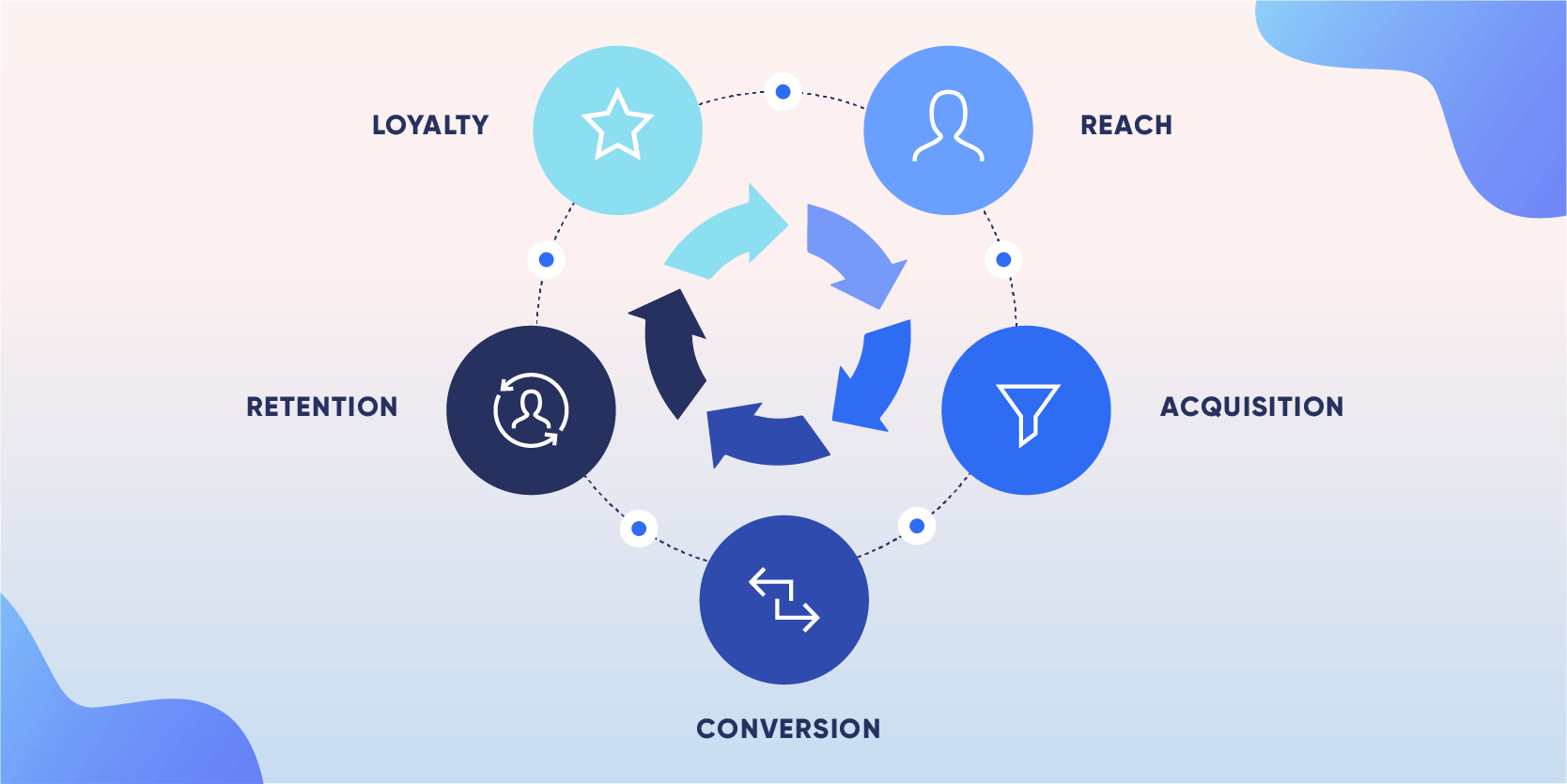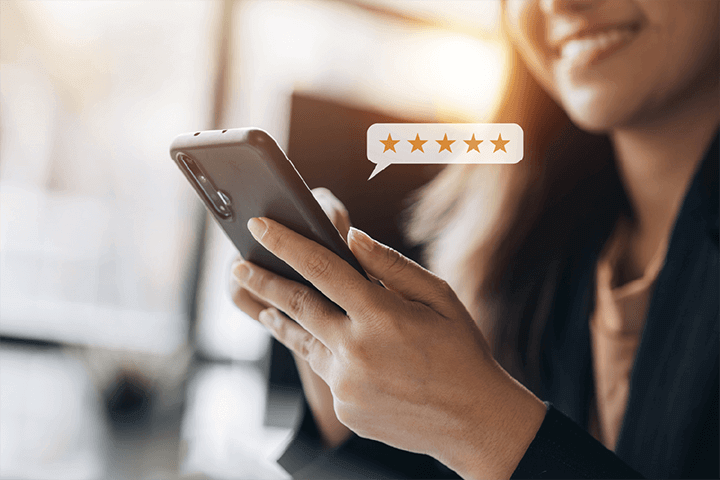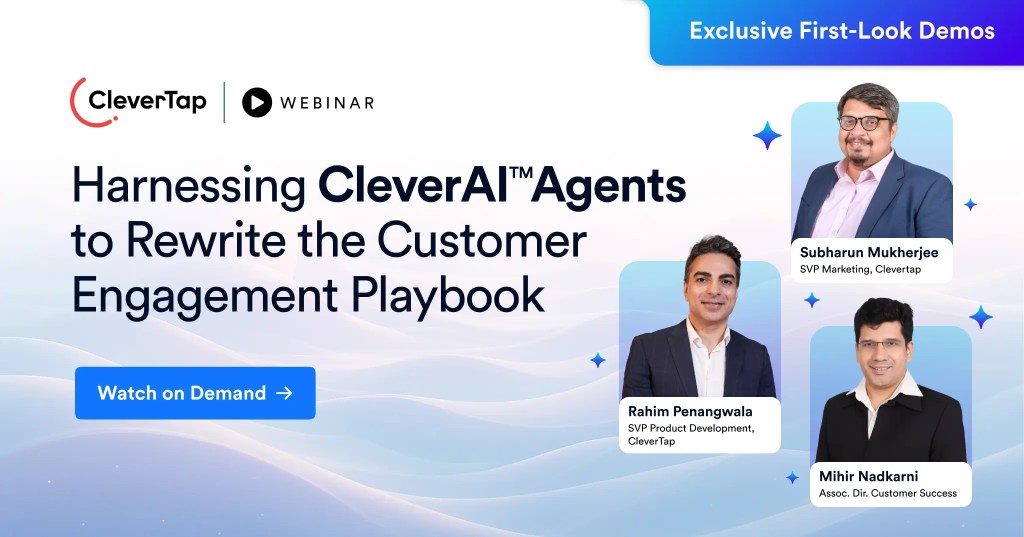Marketers use lifecycle marketing to engage customers at every stage of their journey, from awareness to loyalty. This guide will help you understand, master, and apply these principles to enhance your current marketing strategies.
What is Lifecycle Marketing?
Lifecycle marketing is a strategy used to engage customers at every stage of their journey, from initial awareness to long-term loyalty. It involves creating tailored marketing efforts that address customers’ specific needs and behaviors as they move through different phases of their relationship with your brand.
Lifecycle marketing has become a necessity to be competitive in today’s market. It helps you build stronger customer relationships, increasing retention and lifetime value. When you understand customers’ unique needs at each stage, you can create more personalized and effective marketing campaigns that drive engagement and loyalty.
How Lifecycle Marketing Differs from Traditional Marketing
While traditional marketing often focuses on one-time transactions, lifecycle marketing emphasizes long-term customer relationships. Traditional methods tend to focus primarily on acquiring new customers, but lifecycle marketing goes a step further, ensuring continuous engagement and nurturing customers through every stage of their journey. This approach keeps customers happy and loyal and helps you maximize your returns on marketing investments.

The Stages of Lifecycle Marketing
Understanding the customer lifecycle is crucial for effectively managing your relationship with customers, from their first interaction with your brand to becoming loyal advocates. Each stage requires a unique approach to nurturing and retaining customers, and by addressing each stage with targeted strategies, you can nurture these relationships and maximize customer retention. Now, let’s delve into the six stages of the customer lifecycle:

Awareness
The first step is to create initial awareness through various channels. Your goal is to make a strong first impression through social media, search engine optimization, or paid advertising. The importance of this first stage can’t be overstated, as it sets the tone for the entire customer journey.
Engagement
Once you have their attention, the next step is engagement. Techniques to engage potential customers include personalized email marketing campaigns, interactive content, and social media interactions. Metrics to measure engagement, such as click-through rates and time spent on your site, help you understand what resonates with your audience.
Evaluation
During the evaluation stage, your customers assess value and compare their options. Providing tools and content that aid in product evaluation, like detailed product descriptions, reviews, and comparison charts, can help them make informed decisions.
Purchase
The purchase process should be as simple as possible. A smooth checkout experience, with minimal steps and clear instructions, can significantly reduce cart abandonment rates and increase conversions.
Support
Post-purchase support is critical to overall customer satisfaction. Offering multiple channels for customer service, such as live chat, email, and phone support, ensures a positive customer experience. Quick and helpful responses can turn a one-time buyer into a loyal customer.
Loyalty
Building loyalty involves providing consistent value and rewarding repeat customers. Strategies and tactics to enhance loyalty include customer loyalty programs, exclusive offers, and personalized recommendations. These efforts help create long-term relationships and turn customers into brand advocates.
The Goals of Customer Lifecycle Marketing
The goals of lifecycle marketing are relatively simple – attract and retain your customers. You can achieve this with the following objectives:
- Customer Acquisition: Attracting new customers by creating awareness and interest in your products or services.
- Customer Engagement: Building meaningful interactions with potential and existing customers to keep them interested and involved with your brand.
- Customer Retention: Ensuring customers continue choosing your brand over competitors by providing ongoing value and support.
- Customer Loyalty: Turning satisfied customers into loyal advocates who not only make repeat purchases but also promote your brand to others.
- Customer Lifetime Value (CLV): Maximizing the total revenue you can expect from a customer throughout their relationship with your brand.
These goals are not just standalone targets but integral to your broader business objectives. By focusing on customer acquisition, you increase your market share. Engaging and retaining customers helps reduce churn rates and improve profitability. Building loyalty and maximizing CLV contribute to sustainable business growth and a stronger brand reputation.
Measuring your Goals
To measure the success of your lifecycle marketing efforts, you should track key performance indicators (KPIs) including:
- Customer Acquisition Cost (CAC): The cost associated with acquiring a new customer
- Customer Retention Rate: The percentage of customers who continue to do business with you over a specific period
- Customer Lifetime Value (CLV): The total revenue expected from a customer over their entire relationship with your brand
- Engagement Metrics: Metrics like email open rates, click-through rates, and social media interactions that show how engaged your customers are
- Net Promoter Score (NPS): A measure of customer satisfaction and loyalty based on their likelihood to recommend your brand to others
By regularly monitoring these KPIs, you can gauge the effectiveness of your lifecycle marketing strategies and make data-driven decisions to optimize your efforts. This approach ensures that your marketing initiatives are not only aligned with your business goals but also continuously improve to meet your customers’ evolving needs.
Lifecycle Marketing Strategy
To effectively implement lifecycle marketing, you need to employ specific tactics tailored to each stage of the customer journey. Here’s a breakdown of detailed tactics for each stage, along with tools and resources to aid these efforts and common pitfalls to avoid.
Awareness
Awareness is about getting in front of prospective customers. This is the beginning of any customer journey. Social media, paid ads, and word-of-mouth provide the initial boost that brings you to a user’s attention. However, there are many other avenues to gain a better understanding of a product or service. Use the channels that your prospective customers are on. Get the word out!
Tactics:
- In this stage, it is crucial to invest in an omnichannel marketing strategy. You want to capture potential customers no matter what channel they use, but at the same time, provide them with a seamless experience of your brand.
- You’ve got to reach out to prospects and find them where they congregate. This means everything from display ads and social media ads to influencer marketing and even guest blog posts.
- This is also the stage where a solid content marketing strategy comes into play. Provide shareable content that people will want to spread: infographics, quotes, stories, and bite-sized videos. This content is for the top of your funnel.
- Plan (and hope) for virality in your marketing campaigns. But always in the service of creating materials that are useful to your prospects and that answer their questions.
- Remember to focus on building website traffic and strengthening organic SEO so you can be found on search engine pages.
Common Pitfall: Missing the opportunity to make a strong first impression.
Remedy: Ensure your messaging is clear and engaging to capture attention.
Engagement
With lifecycle marketing, engagement is all about attracting prospective customers and getting them into the sales and marketing funnel so they can be nurtured to the next step: conversion. At this step, you need to give them the information they need to make a buying decision. So, blog posts, whitepapers, ebooks, templates, webinars, and anything else that solves a pain point for your customers.
Tactics:
- To market effectively in these first two customer lifecycle stages, you need to set up compelling lead magnets and landing pages that offer valuable content to users in exchange for their information. This exchange triggers the formal start of lifecycle marketing. Typical offers include ebook downloads, reports, and subscriptions to your email newsletters.
- To support those landing pages, it’s integral to have a solid email marketing strategy that you can refine and improve using analytics. The emails are there to drive people to your website and your app.
- Your content should be interactive, using quizzes, polls, and other media to keep potential customers interested.
Common Pitfall: Failing to segment your audience.
Remedy: Personalize your content to different customer segments to increase engagement.
Evaluation
The evaluation phase is a critical step before a prospect makes a purchase. These prospects are already in your funnel and receiving your nurture emails, blog posts, in-app notifications, and push notifications. Faced with a large market of potential products, it’s easy for potential customers to become overwhelmed and confused.
But they may need more than just content to nudge them to buy. According to research, more than 80% of customers need some type of support when making a purchase. And more than half of them will give up and go away if they don’t get that support. Providing all the information they need on your site makes it easier for them to make an informed decision. This boosts potential customer satisfaction and makes it more likely they will choose your product.
Tactics:
- Provide detailed product descriptions.
- Be sure to have adequate reviews from customers to raise trust in your product and increase the likelihood of conversion.
- Providing comparison charts helps make your site a one-stop shop for customers. When they can see how your product stacks up to the other top offerings on the market, they are less likely to visit competitor sites.
- Offer free trials or demos to help customers build trust in your product and have confidence in purchasing from you.
- The more reviews, the better. So, make an effort to incentivize your loyal fans so they leave reviews in app stores or other marketplaces.
- At this stage, your content marketing strategies should also be comparison-based to prove your value: How does using my app differ from using the competition’s app? In a product shootout with four other competitors’ apps, how does my app excel?
- If you want to market to users at this lifecycle stage, you need to have a fully fleshed-out support team and a knowledge base that can assist and answer any of your prospects’ questions.
Common Pitfalls: Ignoring customer feedback or failing to adequately pursue reviews from customers.
Remedy: Regularly update your content based on customer reviews and feedback to build trust.
Purchase
The purchase phase is the most simple in terms of approach. Prospects at this phase are ready to buy, and your job is to make it as easy as possible.
Tactics:
- Optimize the checkout process with minimal steps and clear instructions.
- Offer multiple payment options and ensure a mobile-friendly experience.
- Offer free shipping or another incentive like an immediate 10% off their first purchase.
Common Pitfalls: Complicated checkout processes.
Remedy: Simplify the steps to reduce cart abandonment rates.
Support
People tend to drop off after the first purchase, so it’s important to ensure you meet customers’ needs post-purchase. In this stage, you should follow up with customers and make sure they’re happy with their purchase. Failure here makes retention nearly impossible, and succeeding means winning loyal customers. In fact, according to customer service statistics, more than 70% of customers become loyal to a brand based on how well their customer service performs.
Tactics:
- Offer multiple customer service channels, such as live chat, email, and phone support.
- Provide a comprehensive FAQ section and how-to guides.
- Devote the necessary resources to train your support team.
Common Pitfalls: Slow response times.
Remedy: Ensure your support team is well-trained and responsive to customer inquiries.
Loyalty
This is the stage where you want to keep the customers you already have and upsell to them. Your customers have purchased from you and are using your app. Your main concern is engaging them so that they use your app and services on a regular basis. The more you can persuade users to return to your app, the better your chances of retaining them and increasing their Customer Lifetime Value.
You want to transform each paid user into a brand advocate and an influencer in their individual networks. Done correctly, your own users will generate buzz via word-of-mouth marketing. Instead of you proclaiming your own app’s value, they do it for you.
Tactics:
- Use machine learning to assist in your efforts at retaining users and making them even more loyal.
- Track what percentage of your customers make repeat purchases. Also, compare new buyers with repeat buyers. This is one way to measure loyalty.
- As in the acquisition stage, investing in an effective customer support team will pay off in the long run. They’re there to make the user experience more pleasant and to answer questions and any difficulties that users encounter.
- Establish a relationship with loyal users and show appreciation for their business by creating loyalty programs, exclusive offers, and personalized recommendations. In short, treat them well and nurture your connection to optimally boost retention rates.
- Create loyalty programs, exclusive offers, and personalized recommendations. Engage customers with regular updates and special promotions.
Common Pitfalls: Neglecting existing customers.
Remedy: Regularly reward loyal customers to keep them engaged and promote brand advocacy.
By employing these tactics and leveraging the right tools, you can effectively guide customers through each stage of their journey, ultimately driving long-term loyalty and business growth. Avoid common pitfalls by staying attentive to customer needs and continuously refining your strategies based on feedback and performance metrics.
Customer Lifecycle Marketing

Understanding the impact of your marketing campaigns on the customer lifecycle is crucial for optimizing your strategies and achieving your business goals. Here are some methods to track and analyze this impact and adjust your strategies based on these insights.
1. Track and Analyze the Impact of Marketing Campaigns
To effectively track and analyze the impact of your marketing campaigns, you should:
- Set Clear Objectives: Define what success looks like for each stage of the customer lifecycle. This could be increasing brand awareness, improving engagement, or boosting customer retention.
- Use Key Performance Indicators (KPIs): Track metrics such as Customer Acquisition Cost (CAC), Customer Lifetime Value (CLV), and Net Promoter Score (NPS) to measure the effectiveness of your campaigns.
- Conduct A/B Testing: Test different versions of your campaigns to see which ones perform better. This helps you understand what resonates with your audience.
- Analyze Customer Feedback: Collect and analyze feedback from customers to understand their experiences and identify areas for improvement.
2. Use Lifecycle Marketing Software to Help You
Several technologies and platforms can help you gather and analyze data to understand the impact of your marketing campaigns. CleverTap’s Lifecycle Optimizer Tool is specially designed to increase retention and customer lifetime value by helping users progress through the customer lifecycle into deeper engagement with your brand.
The tool allows you to measurably progress users through every stage of the customer lifecycle by:
- Understanding the behavior of your user base
- Mapping users to defined lifecycle stages based on qualifying actions
- Experimenting with different engagement approaches
- Rolling out the winning formula to move all users in one stage forward
3. Adjusting Strategies Based
Once you have gathered and analyzed data, you can adjust your strategies based on the insights you gain:
- Identify Weak Points: Look for stages in the customer lifecycle where performance is lacking and focus on improving those areas.
- Optimize Content: Use data to tweak your content and messaging to better resonate with your audience at each lifecycle stage.
- Personalize Campaigns: Tailor your marketing efforts to the specific needs and behaviors of different customer segments to increase engagement and conversions.
- Iterate and Improve: Continuously test and refine your strategies based on performance data to ensure ongoing improvement and success.
By effectively tracking, analyzing, and adjusting your marketing campaigns, you can ensure that your efforts are driving meaningful engagement and loyalty throughout the customer lifecycle.
Integrating Cross-Channel Strategies for Comprehensive Coverage
To maximize the effectiveness of your lifecycle marketing campaigns, it’s essential to integrate cross-channel strategies that provide comprehensive coverage across various touchpoints. Here are some tips for integrating cross-channel strategies:
- Consistent Messaging: Ensure that your messaging is consistent across all channels, including email, social media, website, and customer support. This helps create a cohesive brand experience for your customers.
- Data Integration: Use customer data from different channels to create a unified view of your customers. This allows you to personalize your marketing efforts and provide a seamless experience across all touchpoints.
- Automation: Implement marketing automation tools to streamline your campaigns and ensure timely and relevant communication with your customers. Automation can help you manage complex cross-channel campaigns more efficiently.
- Customer Feedback: Collect and analyze customer feedback from various channels to understand their needs and preferences. Use this feedback to refine your marketing strategies and improve the customer experience.
- Performance Tracking: Monitor the performance of your cross-channel campaigns using key performance indicators (KPIs) such as engagement metrics, conversion rates, and customer satisfaction scores. Use this data to optimize your campaigns and achieve better results.
Hiring a Lifecycle Marketing Manager
The importance of lifecycle marketing has led many companies to create new roles to implement this strategy for their brand.
A Lifecycle Marketing Manager sets the process and tone for guiding customers through every stage of their journey with your brand. Their primary responsibility is to develop and implement strategies that engage customers from the moment they become aware of your brand until they become loyal advocates.
Here are some of the roles and responsibilities of a Lifecycle Marketing Manager:
- Strategy Development: Crafting comprehensive marketing plans that address each stage of the customer lifecycle.
- Campaign Management: Overseeing the execution of marketing campaigns, ensuring they are aligned with lifecycle stages.
- Data Analysis: Analyzing customer data to understand behaviors and preferences and using these insights to refine marketing strategies.
- Collaboration: Working closely with other departments such as sales, customer service, and product development, to ensure a cohesive customer experience.
- Performance Tracking: Monitoring key performance indicators (KPIs) to measure the effectiveness of lifecycle marketing efforts.
Skills and Qualifications
To excel in this role, a Lifecycle Marketing Manager should possess:
- Marketing Expertise: A deep understanding of marketing principles and strategies.
- Analytical Skills: Proficiency in data analysis and the ability to derive actionable insights from data.
- Communication Skills: Strong written and verbal communication skills to effectively convey ideas and strategies.
- Project Management: The ability to manage multiple projects simultaneously and meet deadlines.
- Technical Proficiency: Familiarity with marketing automation tools and CRM systems.
Typical Day-to-Day Activities
A typical day for a Lifecycle Marketing Manager might include:
- Morning: Reviewing campaign performance metrics and analyzing customer data to identify trends.
- Midday: Meeting with cross-functional teams to discuss ongoing projects and align on strategies.
- Afternoon: Developing content for upcoming campaigns, such as email newsletters or social media posts.
- End of Day: Monitoring customer feedback and adjusting marketing strategies as needed.
While smaller companies may lack the resources to engage a lifecycle marketing manager, the job description outlined above gives you an idea of the responsibilities you’ll need to delegate to implement a lifecycle marketing strategy successfully.
6 Examples of Successful Lifecycle Marketing Campaigns
Lifecycle marketing campaigns are designed to engage customers at each stage of their journey, from initial awareness to long-term loyalty. By tailoring your marketing efforts to the specific needs and behaviors of customers at different stages, you can create more effective and personalized campaigns.
Here are six global lifecycle marketing campaigns that got it right:
1. Airbnb: Personalized Email Campaigns
Challenge: Airbnb needed to keep users engaged and encourage repeat bookings.
Lifecycle Phase: Engagement and Loyalty
Strategy: They implemented personalized email campaigns that provided tailored recommendations based on users’ previous searches and bookings. These emails included personalized travel suggestions, special offers, and reminders about upcoming trips.
Outcome: The personalized email campaigns resulted in a significant increase in repeat bookings and customer engagement, helping Airbnb build stronger relationships with their users.
2. Amazon: One-Click Purchase
Challenge: Amazon wanted to reduce cart abandonment rates and streamline the purchasing process.
Lifecycle Phase: Purchase
Strategy: They introduced the “One-Click Purchase” feature, allowing customers to complete their purchases with a single click. This feature saved customers time and made the buying process more convenient.
Outcome: The One-Click Purchase feature significantly reduced cart abandonment rates and increased conversion rates, making it easier for customers to buy products on Amazon.
3. Spotify: Personalized Playlists
Challenge: Spotify needed to keep users engaged and encourage them to spend more time on the platform.
Lifecycle Phase: Engagement and Loyalty
Strategy: They introduced personalized playlists, such as “Discover Weekly” and “Daily Mix,” which provided users with tailored music recommendations based on their listening habits.
Outcome: The personalized playlists led to increased user engagement and longer listening sessions, helping Spotify retain users and build loyalty.
4. Sephora: Beauty Insider Loyalty Program
Company: Sephora
Challenge: Sephora wanted to reward repeat customers and encourage long-term loyalty.
Lifecycle Phase: Loyalty
Strategy: They launched the “Beauty Insider” loyalty program, offering members exclusive rewards, discounts, and personalized product recommendations. The program also included tiered membership levels, providing additional benefits for higher-spending customers.
Outcome: The Beauty Insider program successfully increased customer retention and loyalty, with members making more frequent purchases and spending more on average.
5. MX Player
Challenge: MX Player, India’s leading OTT platform, wanted to redefine user engagement to attract more daily users, keep them engaged for longer periods, and convert them into loyal viewers in a highly competitive and diverse market.
Lifecycle Phase: Engagement and Loyalty
Strategy: MX Player implemented a comprehensive engagement strategy using CleverTap’s laser-sharp audience segmentation and hyper-personalized messaging capabilities. CleverTap’s extensive data-capture and analysis enabled MX Player to categorize viewers based on attributes like location, language preferences, and viewing history. This allowed the creation of tailored content genres such as “Romance – Top Romantic MXOs” and “Guns and Gangsters – Top Crime Thrillers.” Additionally, MX Player utilized A/B testing and real-time insights to refine their messaging, ensuring it resonated with different viewer segments.
Outcome: The hyper-personalized approach significantly increased viewer engagement. MX Player saw a 40% increase in click-through rates (CTR) and a 12.6% increase in user activation. Their revamped engagement campaigns now contribute to 20% of the overall share, with a 5X increase in their share of contribution.
6. Dropbox: Referral Program
Company: Dropbox
Challenge: Dropbox needed to increase user acquisition and grow their customer base.
Lifecycle Phase: Awareness, Purchase, and Loyalty
Strategy: They launched a referral program that rewarded both the referrer and the referred with extra storage space. This incentivized users to invite their friends and colleagues to join Dropbox.
Outcome: The referral program was a massive success, leading to a 60% increase in sign-ups. Dropbox grew from 100,000 to 4 million users in just 15 months.
7. Zappos: Exceptional Customer Support
Challenge: Zappos wanted to differentiate itself through exceptional customer service and support.
Lifecycle Phase: Purchase and Support
Strategy: They implemented a customer-centric approach, offering 24/7 customer support, free shipping, and a 365-day return policy. Zappos also empowered their customer service representatives to go above and beyond to resolve customer issues.
Outcome: Zappos’ exceptional customer support led to high customer satisfaction and loyalty, with many customers becoming brand advocates and recommending Zappos to others.
Final Thoughts
Keep in mind that lifecycle marketing is an ongoing effort. It’s never linear; it’s cyclical.
As users evolve from leads to paying customers, their needs shift, and their experience engaging with your brand changes. Successful lifecycle marketing requires constant iteration to address those needs as they evolve. Every campaign is an opportunity to engage and retain users, increasing Customer Lifetime Value and bringing them closer to becoming brand champions.
Experiment with our Lifecycle Optimizer to break down your entire user base into defined lifecycle stages, then create automated marketing campaigns that draw customers into deeper engagement with your brand. Learn more about this feature or schedule a personalized demo to see it in action.
Shivkumar M 
Head Product Launches, Adoption, & Evangelism.Expert in cross channel marketing strategies & platforms.
Free Customer Engagement Guides
Join our newsletter for actionable tips and proven strategies to grow your business and engage your customers.















































